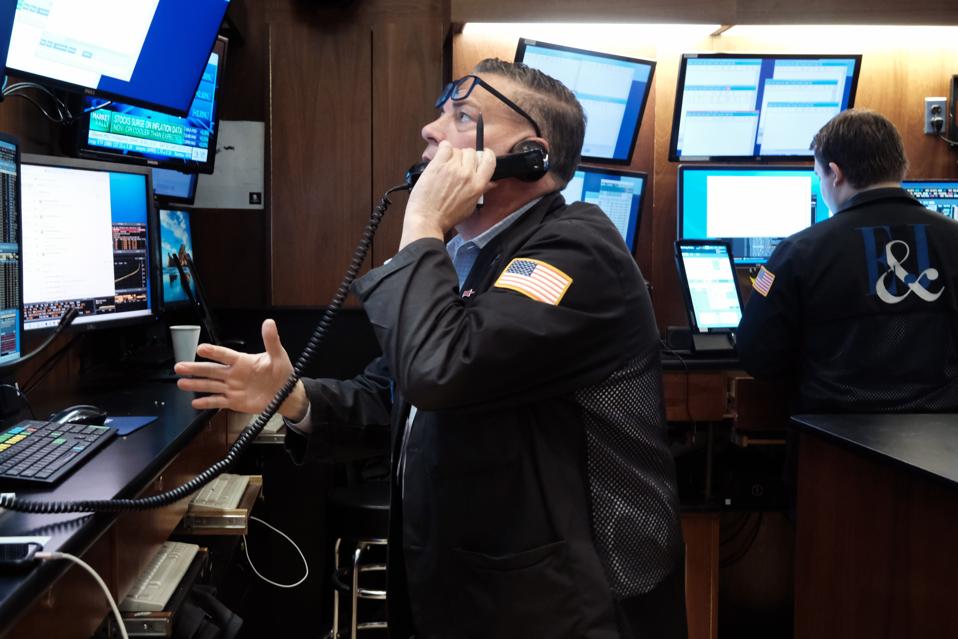Yield curve inversion has historically predicted U.S. recessions with greater accuracy than many other economic indicators. The signal has suggested a recession could be coming since summer 2022, but the U.S. economy continues to show robust growth so far.
What Is An Inverted Yield Curve?
An inverted yield curve occurs when long-term interest rates on U.S. government bonds fall below their short-term equivalents. For example, currently the 2 year interest rate is 4.5%, compared to 4.2% for the 10 year. Often interest rates rise as maturity lengthens, but with an inverted yield curve, as we’re seeing now, the opposite is true. Inverted yield curves are common when the U.S. Federal Reserve has raised interest rates, as we’ve seen recently as the Fed has hiked rates aggressively to tame inflation.
Why It Matters
Research by the researchers at the New York Federal Reserve has found that an inverted yield curve has historically been a good recession predictor going back to the 1950s.
As of January 2023, the model gave a 60% chance of a U.S. recession on a 12 month view. However, that recession risk has been rising since 2022, and U.S. growth and job creation have remained strong recently, despite the dire forecasts.
Now, the yield curve is a leading indicator, so a recession could still validate the forecast, but it’s also possible that the avoidance of a recession despite the Fed raising interest rates is another unique feature of the current economic cycle.
Recent Strong Economic Data
A U.S. recession is formally defined by a panel of experts after the fact, but a simple measure is two consecutive quarters of negative growth for the U.S. economy. That’s not what we’re seeing currently, U.S. growth has been elevated in Q3 2023 at 4.9% and still strong on the latest estimate for Q4 at 3.3%. In addition, January’s jobs report was also strong with the jobs rising 353,000 in January, well above most expectations. To the extent the U.S. economy continues to grow, the window for a 2024 recession narrows.
There are various theories as to why the yield curve may be less robust as an economic indicator than in the past. Some argue the U.S. economy is less dependent on interest rates than it once was. Others believe it might be another quirk of this relatively unique economic cycle. Nonetheless, the model holds fast that a recession is still more likely than not in 2024.
What’s Next?
From here, the Fed has hinted that interest rates are likely to fall. That could lower the recession signal, to the extent the yield curve becomes less inverted. However, there is still some way to go until then and the yield curve’s call for a recession remains in place.
There is still time for negative economic data to come in that could potentially cause a recession in 2024, as the yield curve predicts. Yet, so far the economic news implies accelerating growth over recent months, rather than a recession.
That said, a lot more economic data for 2024 has yet to come in. Others have argued that the best recession signal comes when the yield curve stops being inverted, so it’s possible that the yield curve indicator may still be vindicated, but so far in the current economic cycle it is not forecasting as well as history suggests.

